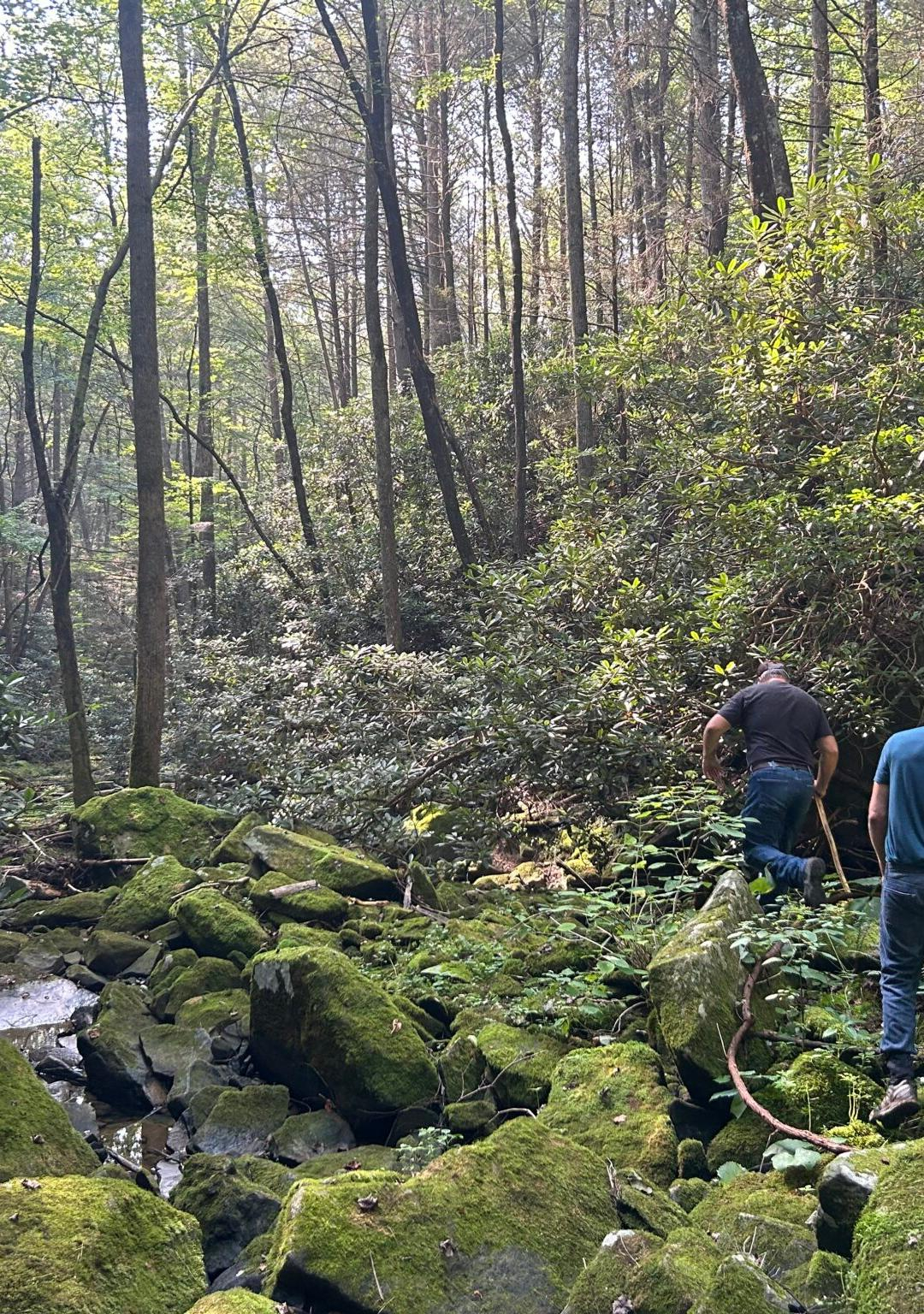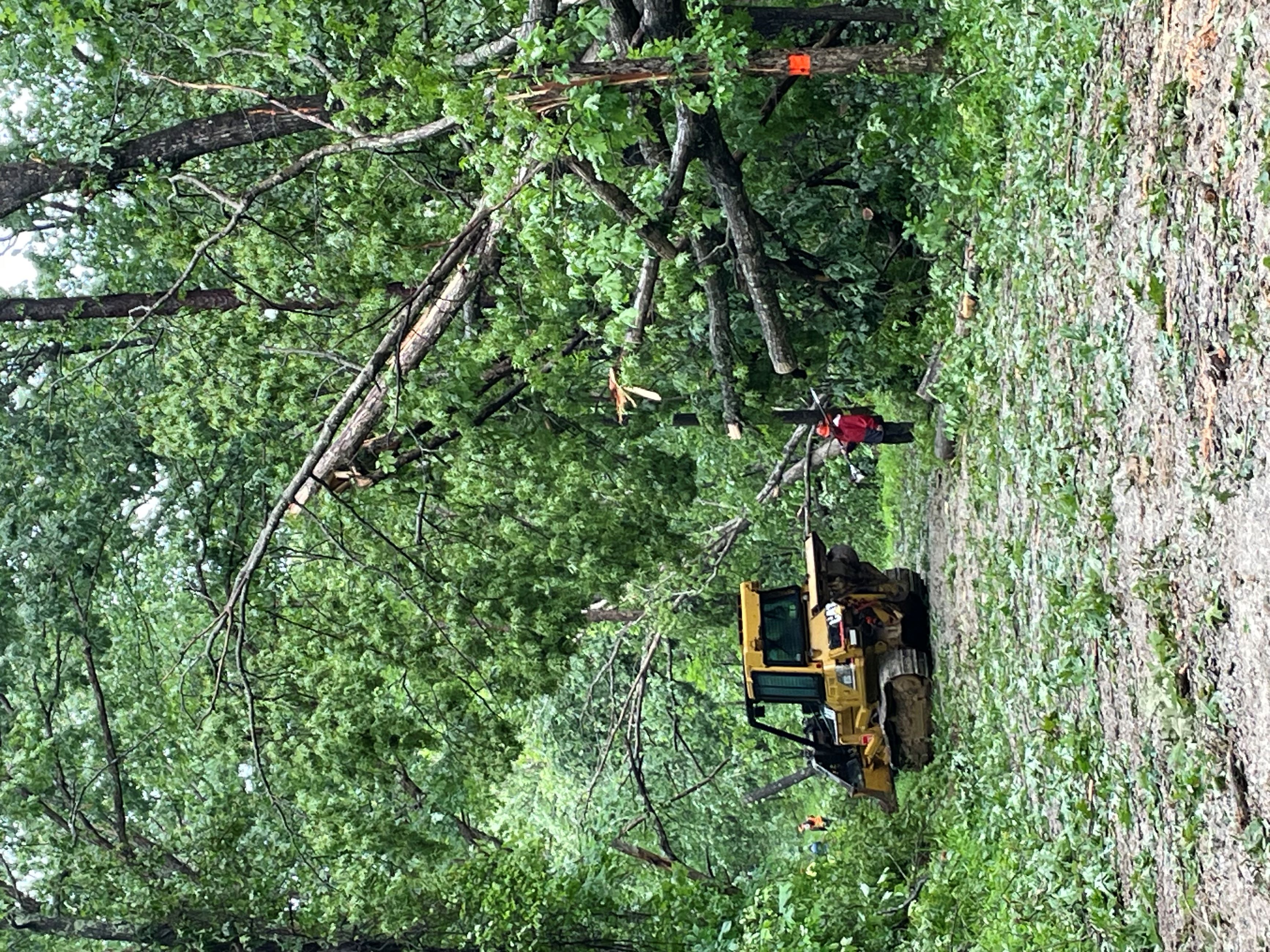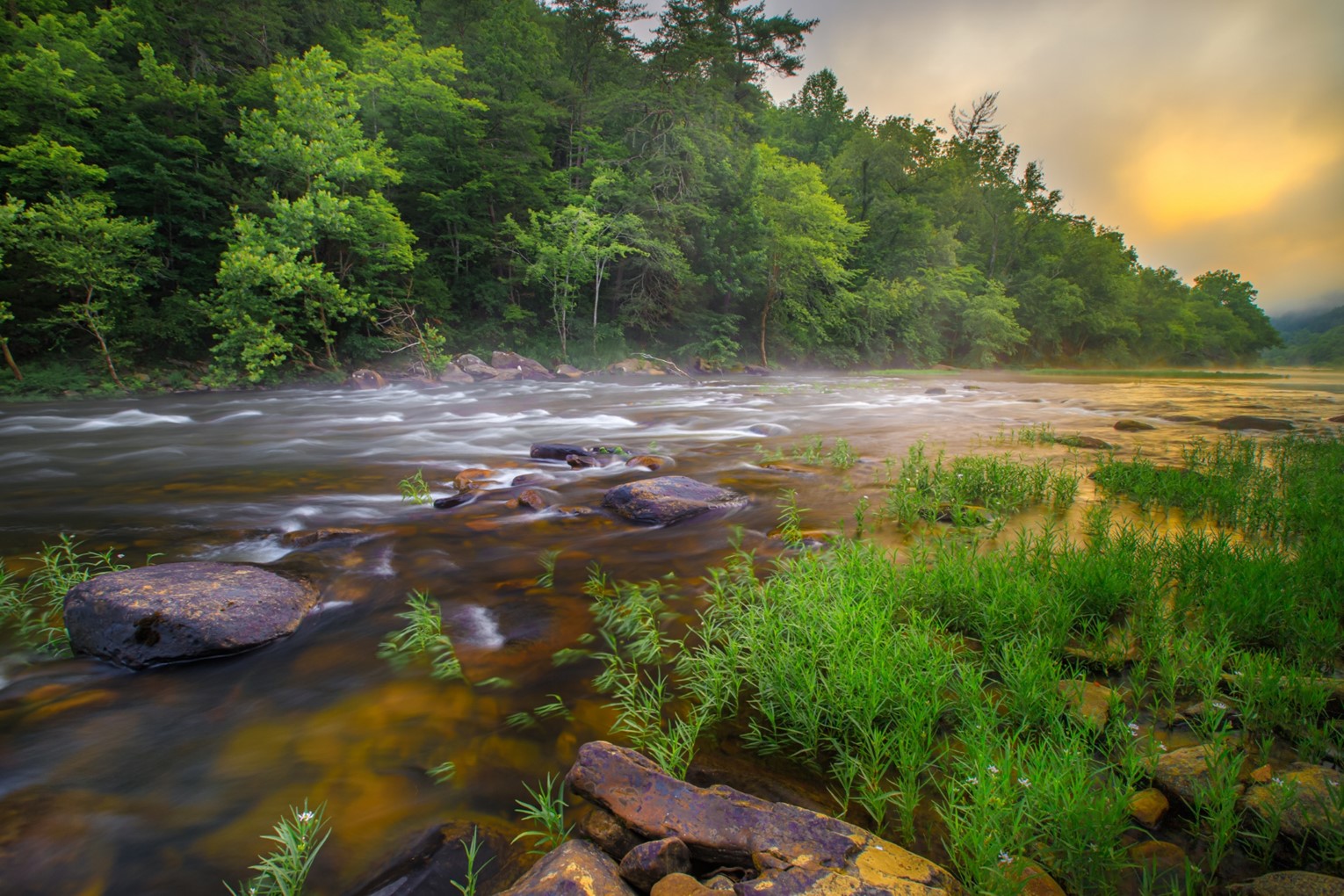Displaying items by tag: national park service
Land donation protects Obed-area wildlands on eastern fringes of Cumberland Plateau
 Hikers walk along Ramsey Creek during a dry time. Tennessee Citizens for Wilderness Planning has assembled land to be turned over to the National Park Service to expand public lands at the Obed Wild and Scenic River. Chuck Estes/Tennessee Citizens for Wilderness Planning
Hikers walk along Ramsey Creek during a dry time. Tennessee Citizens for Wilderness Planning has assembled land to be turned over to the National Park Service to expand public lands at the Obed Wild and Scenic River. Chuck Estes/Tennessee Citizens for Wilderness Planning
There’s more room to roam in the Cumberlands thanks to Oak Ridge-based citizens group
WARTBURG — As East Tennesseans and tourists alike enjoy summer fun on the wild Obed River, enthusiasts are growing its amount of federally protected land.
Part of the U.S. National Park Service system, the Obed Wild and Scenic River in Cumberland and Morgan Counties on Tennessee’s Cumberland Plateau offers swimming, hiking, picnicking, kayaking, fishing and climbing at the federally protected park. It currently includes about 45 miles along streams like the Obed and Emory Rivers.
Residents of Oak Ridge, a little less than an hour’s drive away, created Tennessee Citizens for Wilderness Planning (TCWP) and lobbied to create the federally protected area in 1976. Now, the same group, through fundraising and land swaps with anonymous private individuals, has gained 30 acres on which it plans to build a trail connected to the federal land.
- obed national wild and scenic river
- tennessee citizens for wilderness planning
- tennessee land preservation
- cumberland mountain quail
- cumberland plateau
- cumberland hiking
- new hiking trails in east tennessee
- hiking in tennessee
- recreation
- fishing
- kayaking
- climbing
- ramsey creek
- national park service
- hellbender
- citizen action
Update: Rangers find body of man swept away by high water near Obed
 Cleanup crews clear a section of roadway in Big South Fork National River and Recreation Area following storms that swept the park May 26. National Park Service
Cleanup crews clear a section of roadway in Big South Fork National River and Recreation Area following storms that swept the park May 26. National Park Service
Search came as Big South Fork cleans up after May 26 storm that brought May rainfall total to 12 inches
WARTBURG — Searchers found the body of a man that was the subject of a search that began Memorial Day after he was swept away by high water in Daddy’s Creek in the Catoosa Wildlife Management Area in Morgan County.
Morgan County emergency management director Ethan Webb late Friday identified the victim as 57-year-old Wade Davis, originally identified by authorities as a Cumberland County resident. National Park Service personnel recovered the body about a mile downstream from Devils Breakfast Table near the Obed River. It is a rugged, steep area traversed by the Cumberland Trail.
Daddy’s Creek is a popular kayaking destination featuring class III and IV rapids that flows into the Obed River. Heavy rain had swollen the creek out of its banks, Webb said. Davis was with a family member when he lost his footing while wading and was swept downstream.
Multiple agencies were involved in the search “by air, by water and by land,” Webb said. “There wasn’t a day we didn’t search.” Drones, inflatable boats and a Highway Patrol helicopter were used. At least 25 people were involved at some point during the search, which was complicated by the speed of the water and rapids.
“We were in constant contact with the family,” he said. On Friday, the family received at least a measure of closure.
- obed wild and scenic river
- man missing in obed river
- search for man obed river
- big south fork national river and recreation area
- big south fork storm
- may rainfall big south fork
- tennessee wildlife resources agency
- morgan county rescue squad
- cumberland county rescue squad
- tennessee highway patrol
- national park service
- daddy’s creek
- catoosa wildlife management area
Obed Wild and Scenic River annual photo contest deadline is July 15

WARTBURG — Do you have beautiful photos of the Obed Wild & Scenic River? Enter your images in the 2024 Obed photography contest. Images may show wildlife, plant life, natural landscapes, historic areas, weather, or people interacting with nature within the boundaries of the Obed Wild and Scenic River. All photographs should accurately reflect the subject matter and the scene as it appeared.
Photographs may be submitted into one of five categories:
• Dark Skies — Photographs that show a view of the night sky.
• Flora & Fauna — Animals in their natural habitat, including close-ups of invertebrates, or plants in
their natural habitat, including close-ups of flowers, fungi, lichen, and algae.
• Youth — Entries in any category by photographers 17 years of age and under.
• Landscapes — Expansive and dramatic views of the land and its features within the Tennessee park
boundaries.
• Recreation — Photographs of people participating in recreational activities.
What to expect at Great Smoky Mountains National Park this Veterans Day weekend

GATLINBURG — In commemoration of Veterans Day, visitors to Great Smoky Mountains National Park will not be required to purchase or display a parking tag on Saturday, Nov. 11. This will be the last fee-free day of the year at the Smokies and across the National Park Service.
Visitors who wish to buy a weekly or annual tag on Saturday may continue to do so online, in the park or at various locations in park communities. Park rangers will continue their parking enforcement efforts on fee-free days, such as issuing warnings and citations for vehicles parked in marked no-parking areas. The Smokies participated in three other fee-free days this year: National Park Week in April, the anniversary of the Great American Outdoors Act in August, and National Public Lands Day in September.
On Sunday, Nov. 12, Cades Cove Loop Road will open at 11 a.m. Friends of the Smokies, the park’s philanthropic partner, is hosting the annual Cades Cove Loop Lope, a foot race that gives registered runners a chance to run a 3.1- or 10-mile loop course in Cades Cove.
 The Cades Cove Loop Lope is the only organized footrace held inside Great Smoky Mountains National Park, to benefit Friends of the Smokies. All funds raised benefit park projects and programs such as historic preservation, wildlife conservation, native plant and grassland restoration, and much more.
The Cades Cove Loop Lope is the only organized footrace held inside Great Smoky Mountains National Park, to benefit Friends of the Smokies. All funds raised benefit park projects and programs such as historic preservation, wildlife conservation, native plant and grassland restoration, and much more.
“It has been a fantastic career. It has been kind of like a fantastic dream for me. A fantastic wonder.”

Electrofishing innovator retires after 30 years of service with TWRA
MORRISTOWN — Bart Carter, Tennessee Wildlife Resource Agency Region 4 Fisheries Program Manager, has retired after three decades of service to the state’s wildlife resources.
During his 33-year career, his work included improving hatcheries, enhancing fish habitat, restoring streams to native fish fauna, helping discover new species, adding public access areas, and mentoring employees.
One of his most significant developments during his career was designing and building new backpack electrofishing equipment.
“Electrofishing can be an effective tool for fish community sampling, fish relocation, invasive species eradication, (and) sampling fish tissue contaminants,” said Mark O’Neal, director of ETS Electrofishing systems, LLC in Madison, Wisconsin.
“The tools they use just stun fish and doesn’t kill them. It stuns them out and then they can weigh them and put a tag on them, without having to using a pole with a hook or a net,” O’Neal said.
“It puts out a high DC voltage pulse. On a boat system you have to use a larger pulse. More DC power to drive a current in the water. When the fish experience a DC current they go to the anoid,” O’Neal said.
- bart carter
- tennessee wildlife resource agency
- ets electrofishing system
- mark o’neal
- john hammonds
- region 4 reservoirs fisheries biologist
- region 4 fisheries program manager
- twra region 4
- american fisheries society
- rainbow trout
- warmwater streams biologist
- national park service
- south holston
- watagua
- clinch
- powell
- nolichucky
- french broad
- east tennessee river
Big South Fork closes 60-acre donut hole
 National Park Service
National Park Service
Land conservancy and estate of long-ago German immigrant expands protection of North White Oak Creek
Big South Fork National River and Recreation Area has grown inward by 60 acres.
The National Park Service announced this week that it officially acquired the donated acreage along North White Oak Creek within Big South Fork. It had previously been in private ownership.
The Allardt Land Company and the estate of Bruno Gernt (a remarkable individual in his own right) originally donated the approximately 60 acres within the boundaries of Big South Fork to TennGreen Land Conservancy. In December 2021, TennGreen transferred the property to the National Park Service.
“This tract provides essential protection for the south side of North White Oak Creek, a popular area in the southwest portion of the (125,000-acre park that straddles the Tennessee and Kentucky state lines in the Cumberlands).
“Park visitors will now forever be able to enjoy peaceful views across the creek of an oak-hickory and northern hardwood forest canopy,” Superintendent Niki Stephanie Nicholas said in a press release.
“We truly appreciate the Allardt Land Company, Estate of Bruno Gernt, and TennGreen for their generosity.”
What are your ideas and opinions about interpretation at the Manhattan Project National Historical Park?
Apr 22 5:30 p.m. EDT
Manhattan Project National Historical Park Stakeholder Engagement Community Meeting
National Park Service
Manhattan Project National Historical Park (MNHP) is initiating a stakeholder process that will be used to help inform the park’s interpretive planning.
Zoom Meeting - Free and open to the public - RSVP
Interpretive themes convey park significance. Primary interpretive themes are the key ideas through which the park’s nationally significant resource values are conveyed to the public. They connect park resources to the larger ideas, meaning, and values of which they are a part. They are the building blocks—the core content—on which the interpretive program is based.
Find more details about the process, background information on the MNHP and register for the first meeting here.
The interpretive plan will provide guidance in developing future services, activities, events and exhibits in Oak Ridge, at the other MNHP locations, and through media outreach.
The recording of the April 13 national introductory webinar for this stakeholder process has just been released:
The days the Earth stood still (Part 1): Covid cleared the air in the lonely Smokies
 Great Smoky Mountains National Park Air Resource Specialist is seen at the Look Rock air quality research station. Courtesy National Park Service
Great Smoky Mountains National Park Air Resource Specialist is seen at the Look Rock air quality research station. Courtesy National Park ServiceThe lack of regional and local vehicle traffic during the pandemic greatly reduced measurable pollution in Great Smoky Mountains National Park.
This is your Hellbender weekend read, and the first in an occasional Hellbender Press series about the effects of the Covid-19 pandemic on the natural world
Great Smoky Mountains National Park shut down for six weeks in 2020 during the Covid-19 pandemic. Recorded emissions reductions during that period in part illustrate the role motor vehicles play in the park's vexing air-quality issues. The full cascade of effects from the pollution reductions are still being studied.
Hellbender Press interviewed park air quality specialist Jim Renfro about the marked reduction of carbon dioxide and other pollutants documented during the park closure during the pandemic, and the special scientific opportunities it presents. He responded to the following questions via email.
Hellbender Press: You cited “several hundred tons" in pollutant reductions during an interview with WBIR of Knoxville (in 2020). What types of air pollutants does this figure include?
- great smoky mountains national park
- coronavirus
- smokies
- pandemic
- air pollution
- covid19
- air quality
- shutdown
- pollutant reduction
- carbon dioxide
- co2
- motor vehicle
- jim renfro
- nox
- voc
- improvement
- haze
- ozone
- look rock
- emission
- greenhouse gas
- visitation
- visitor
- traffic volume
- analysis
- monitoring station
- particulate matter
- mercury
- acid deposition
- quality control
- quality assurance
- so2 regional haze rule
- national park service
- nps
- air resource specialist
- ecosystem
- bioaccumulation
- so2
- road closure
- power plant
- epa
- environmental protection agency
Big South Fork mulls price increase for camping, other uses
WVLT: Public comment sought on fee increases
Bandy Creek, Blue Heron and Alum Ford campground fees would increase costs to between $15 and $140, depending on use. Comments will be accepted through March 22.